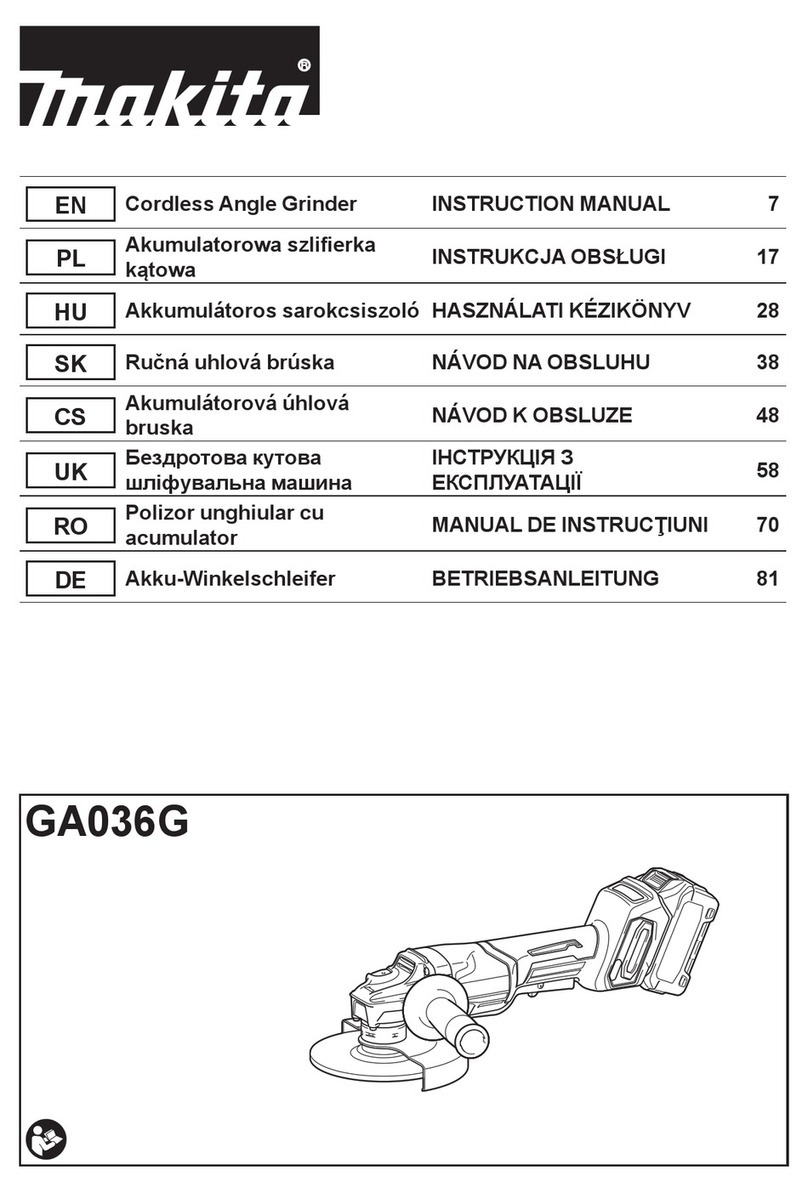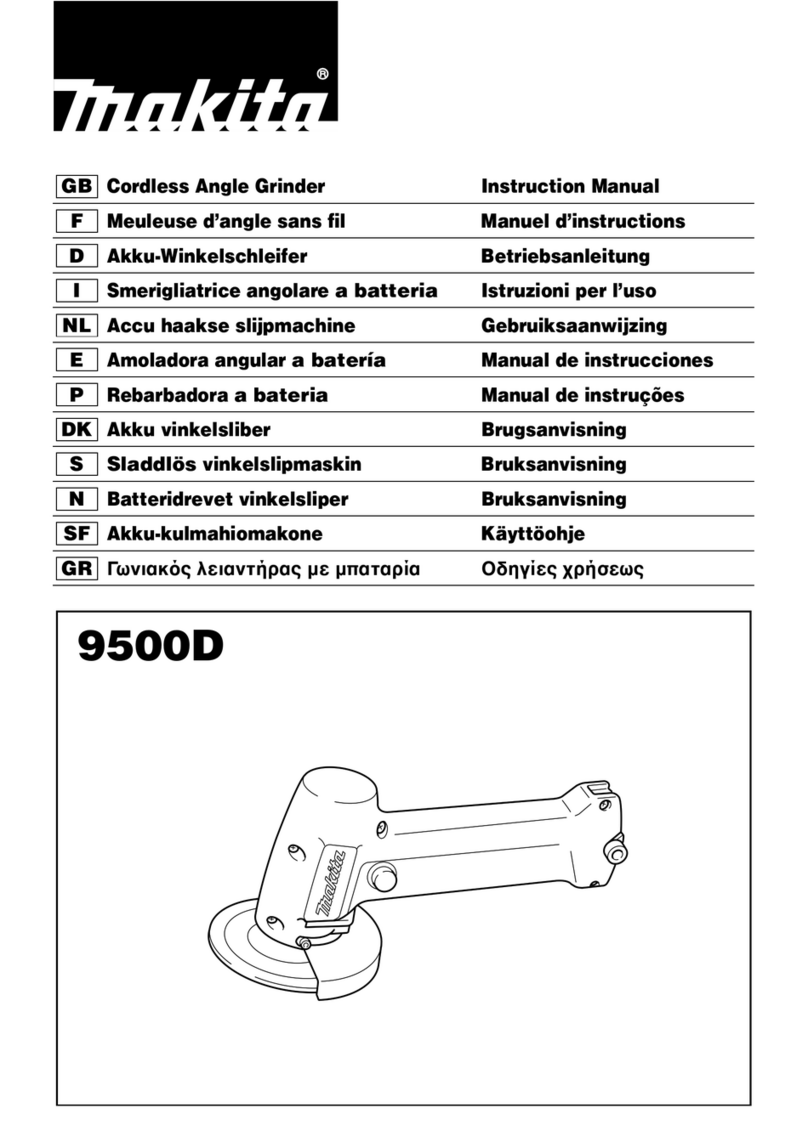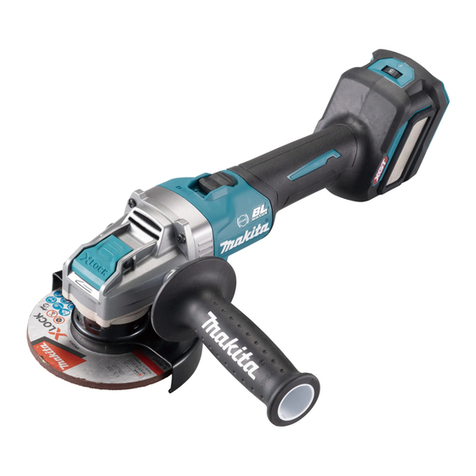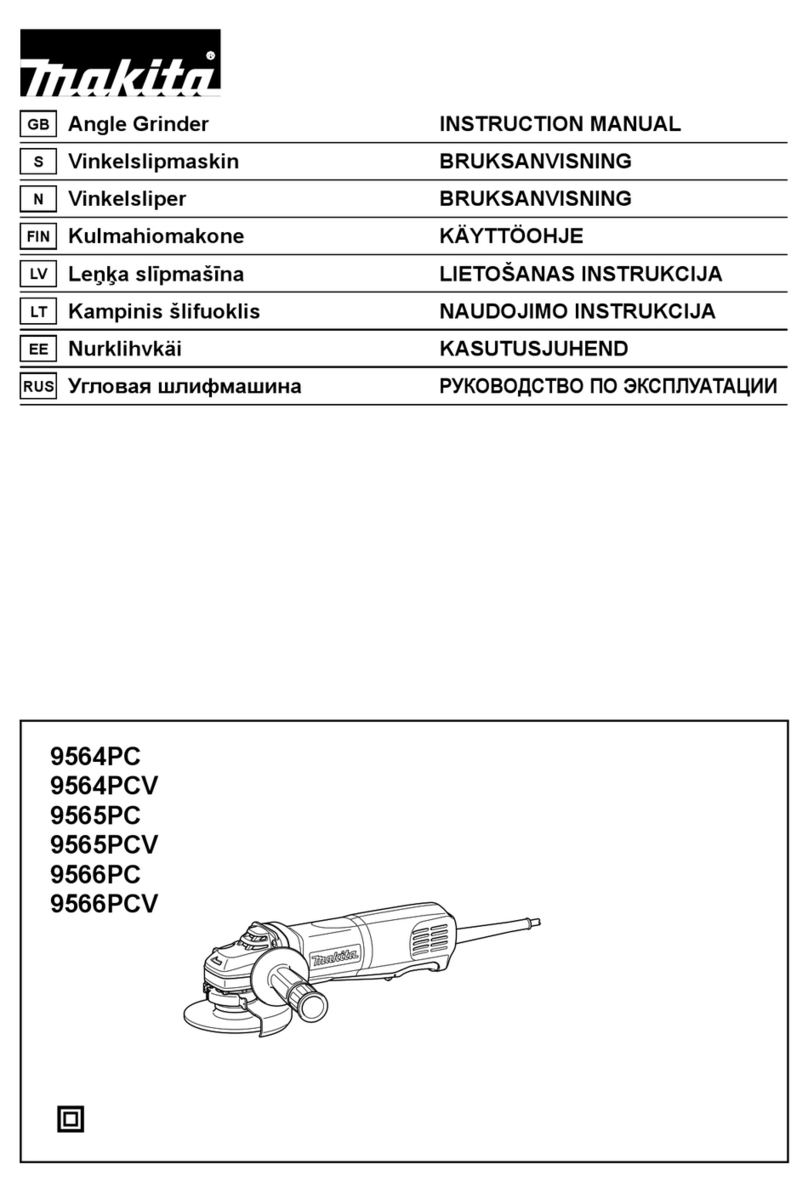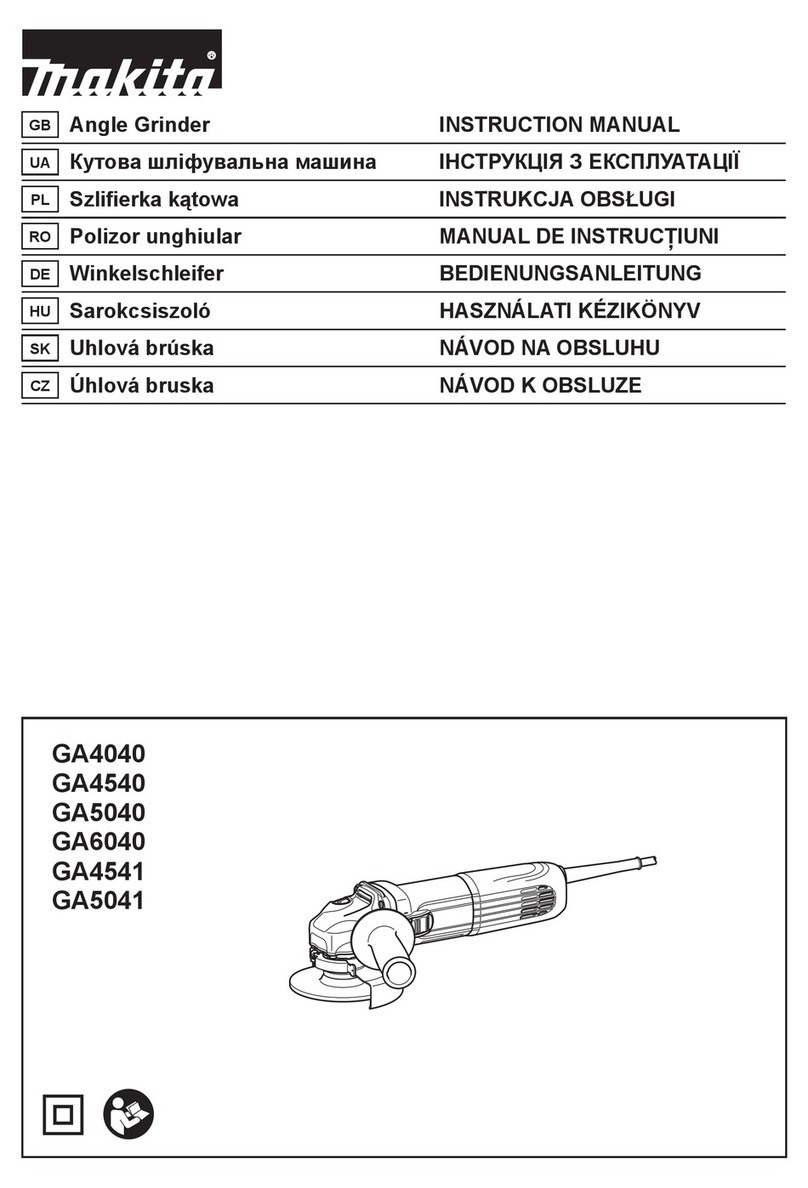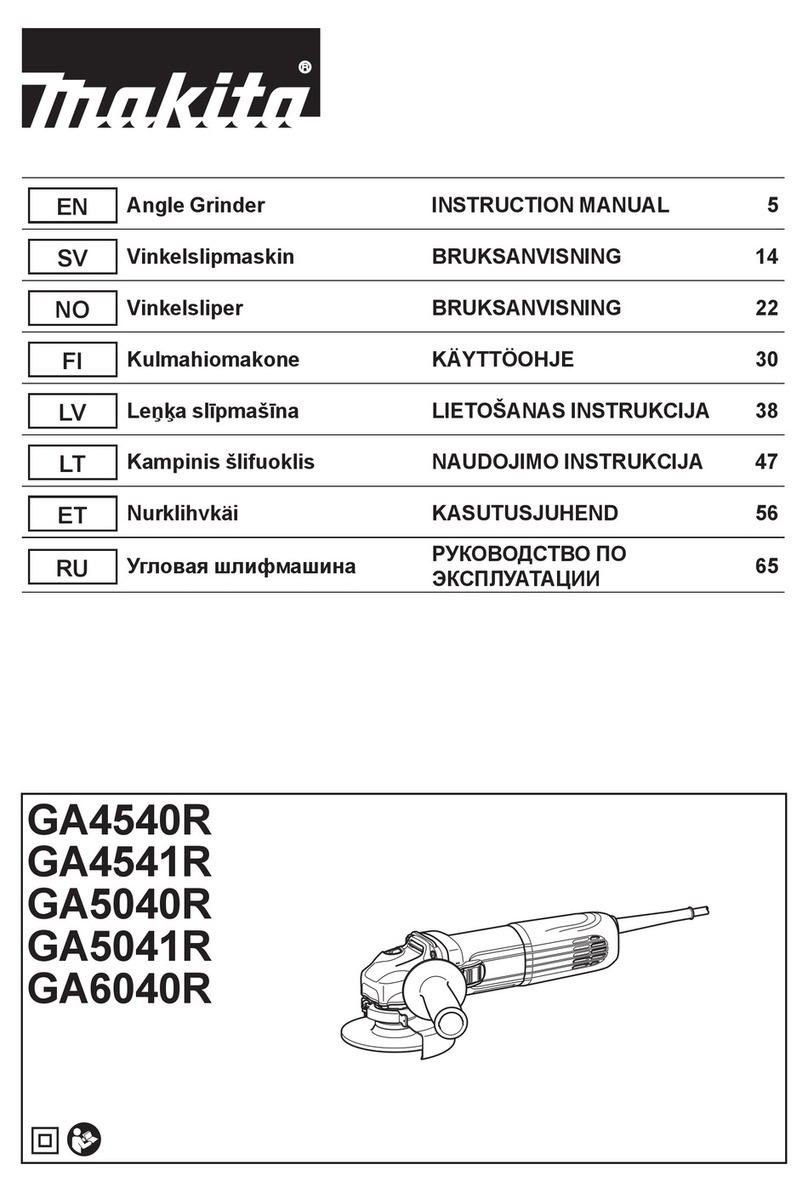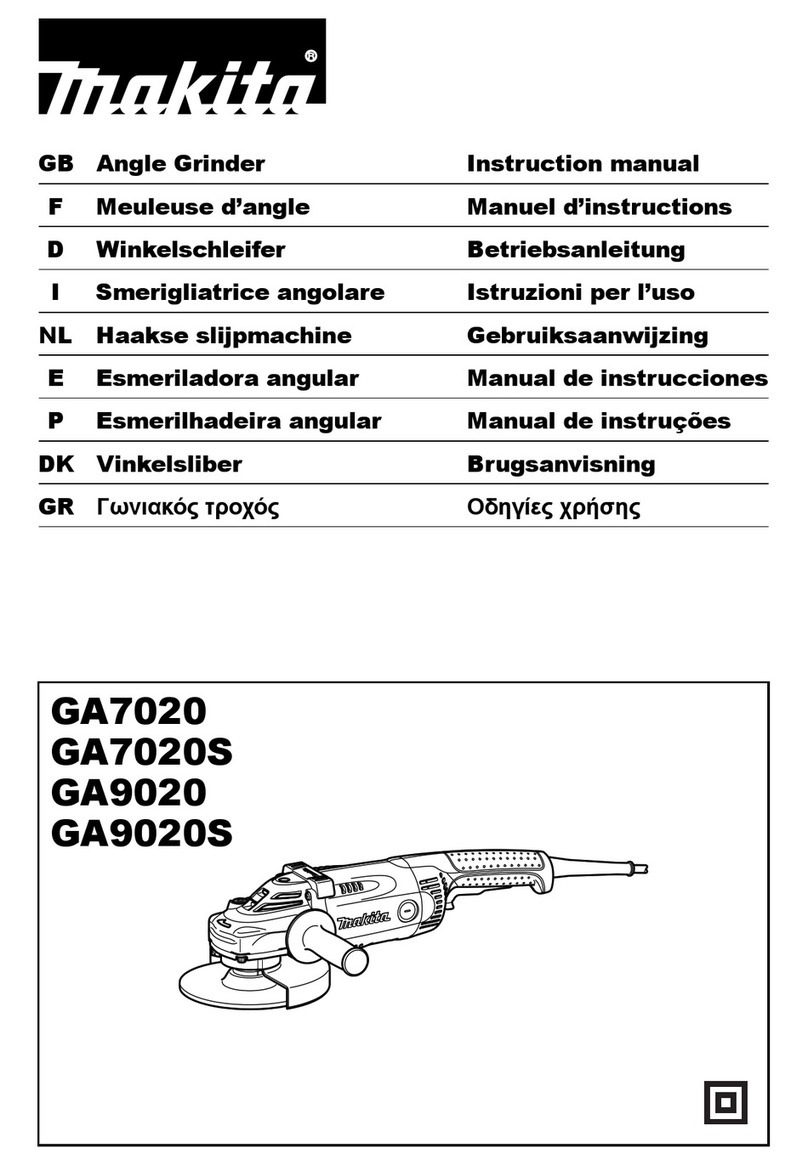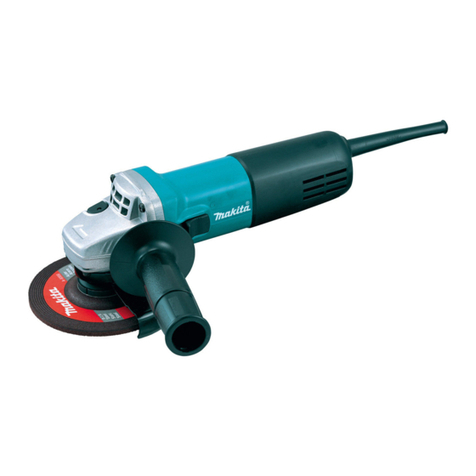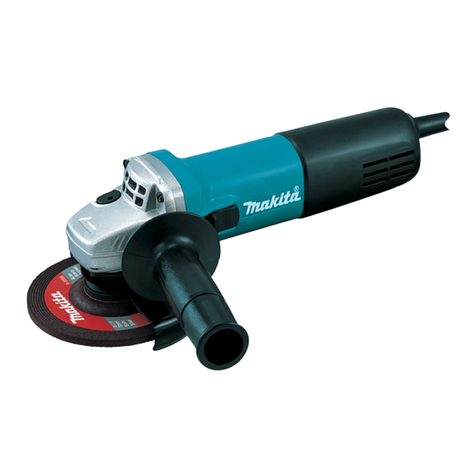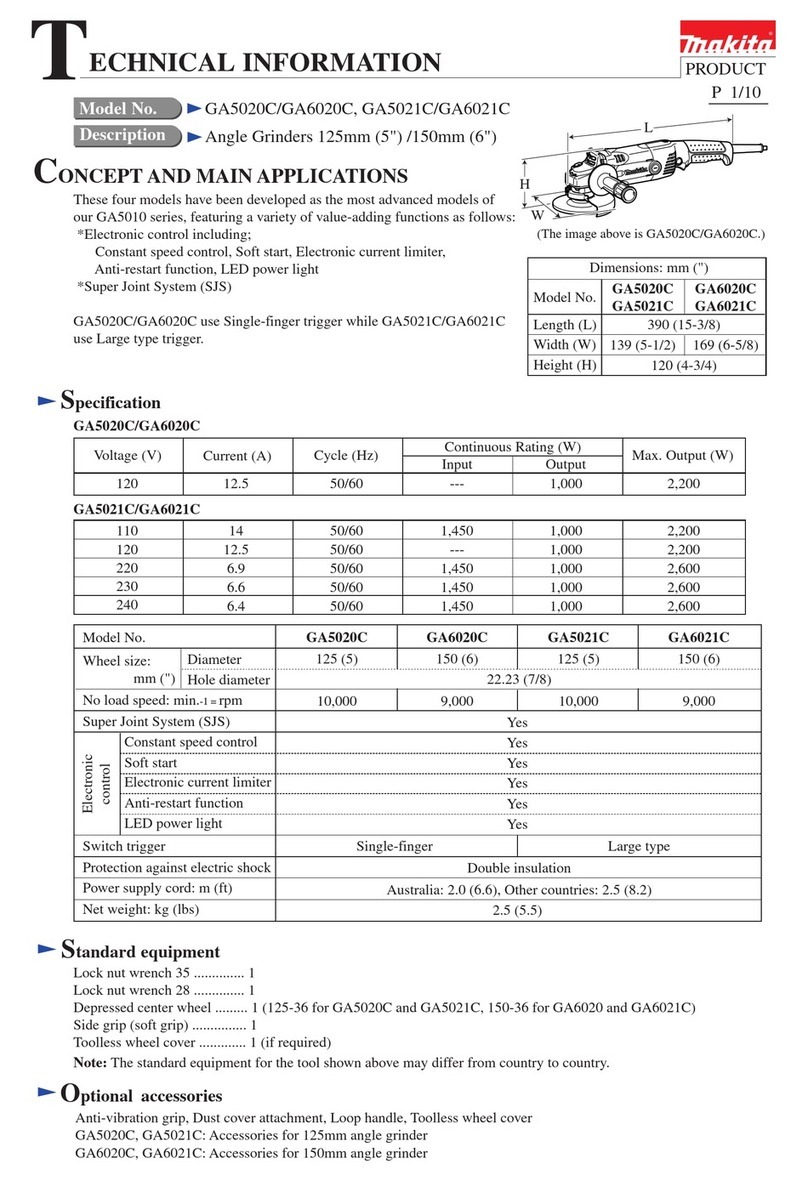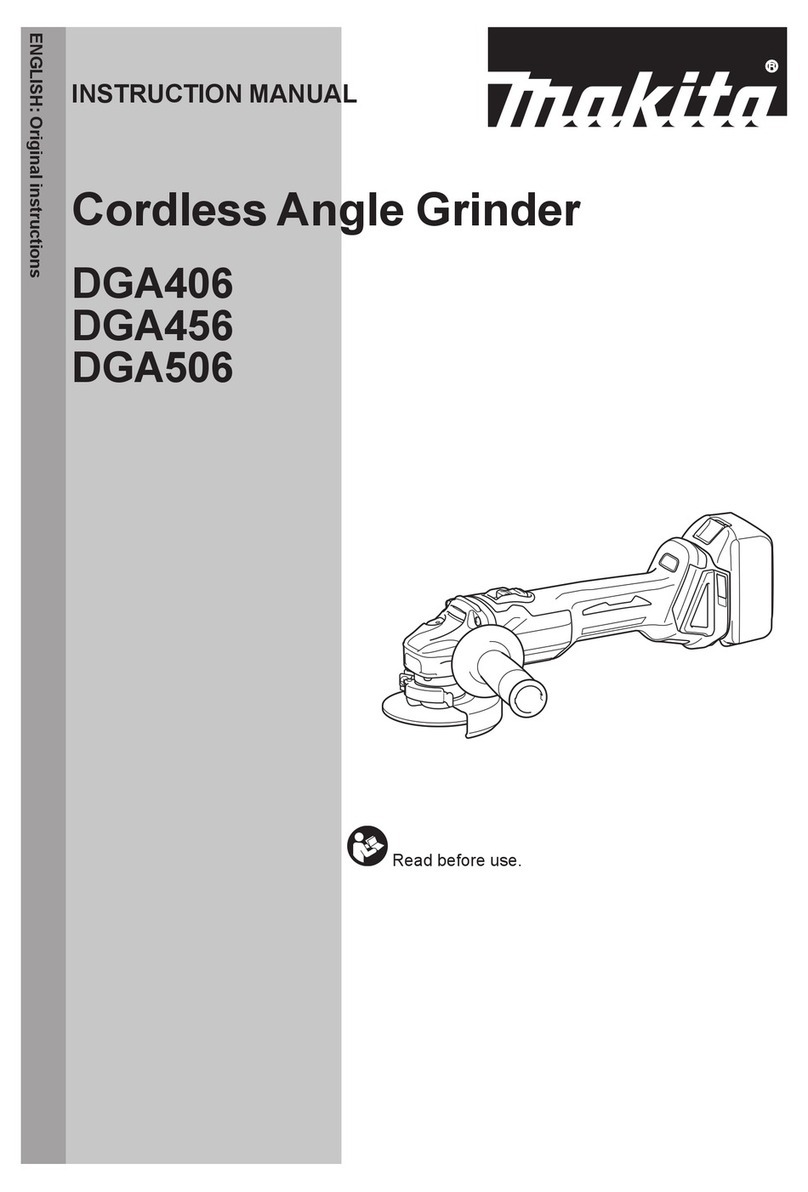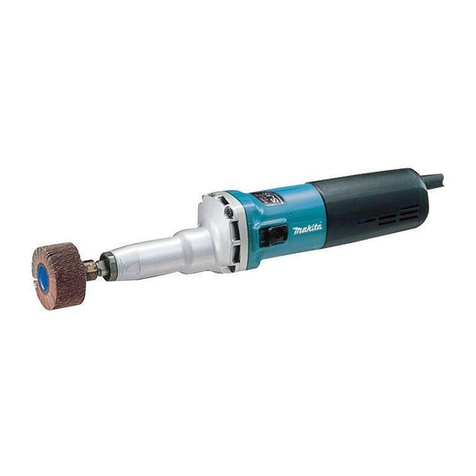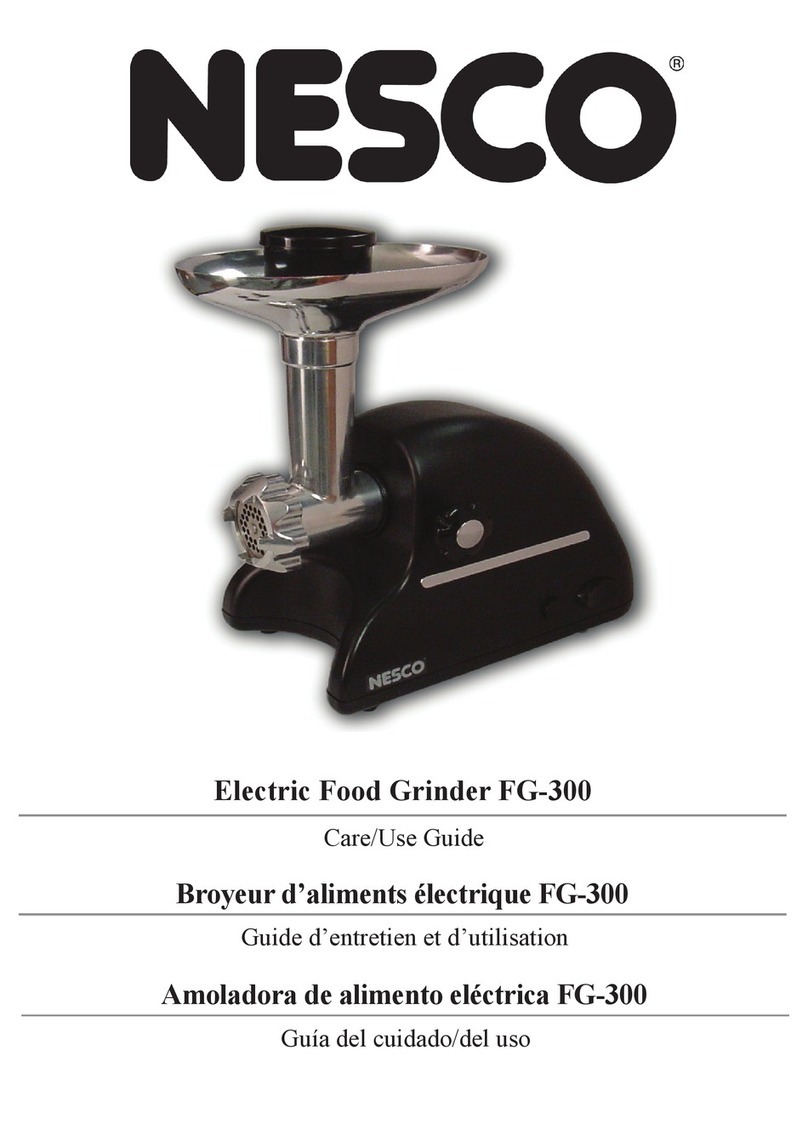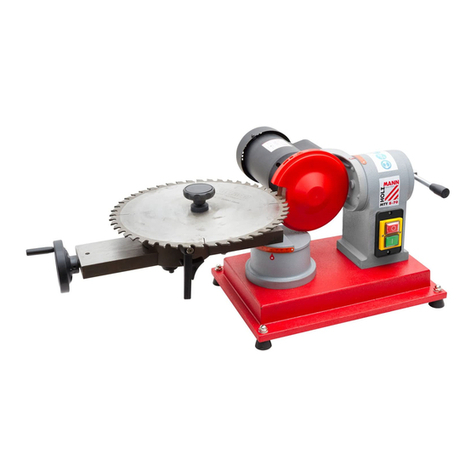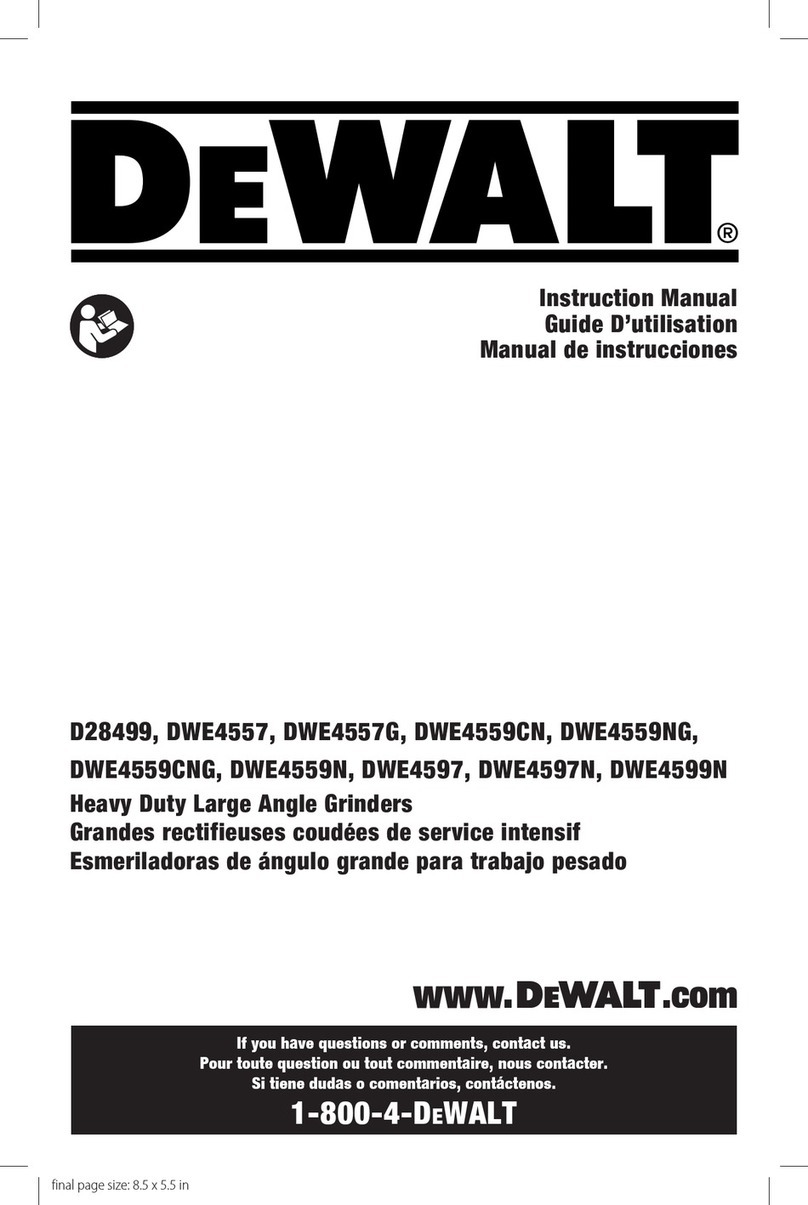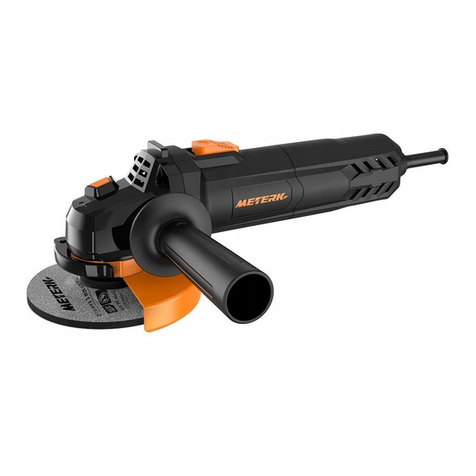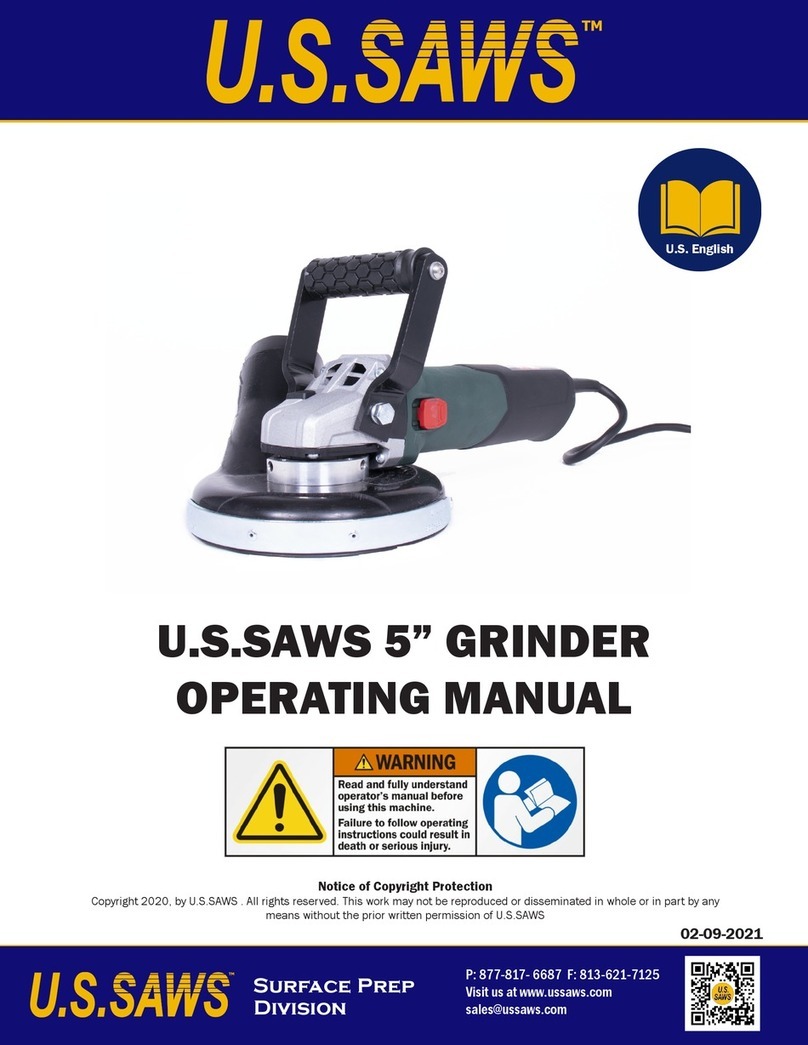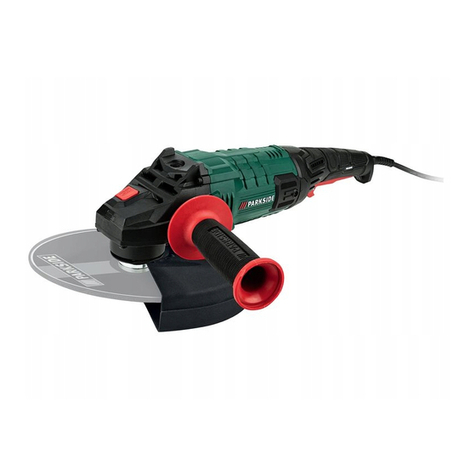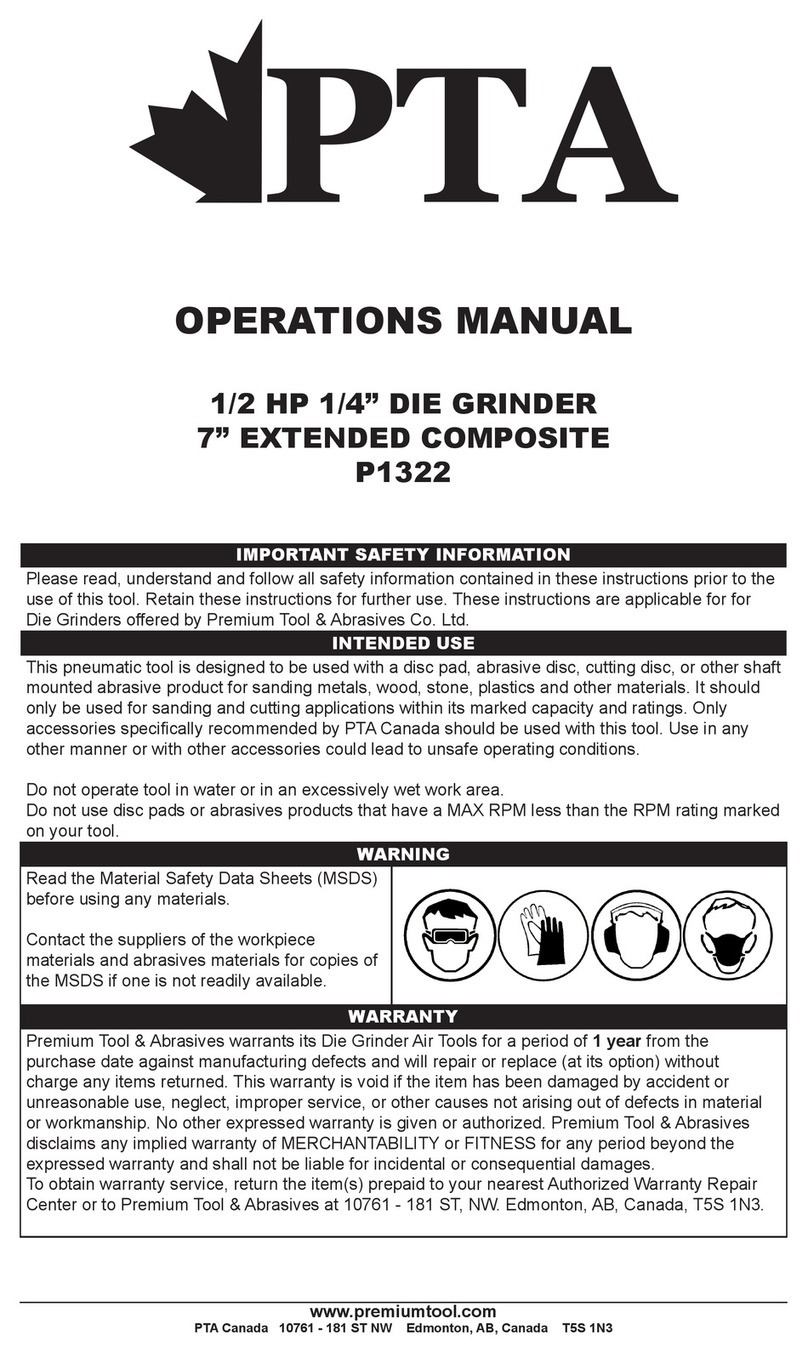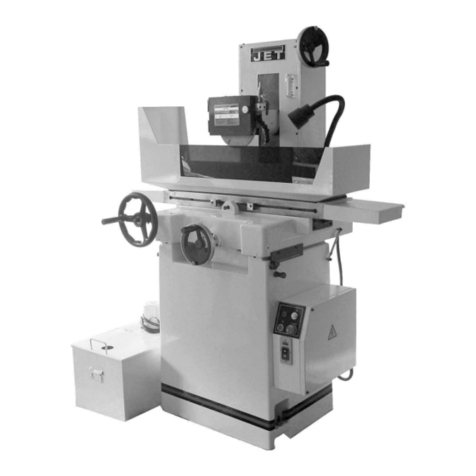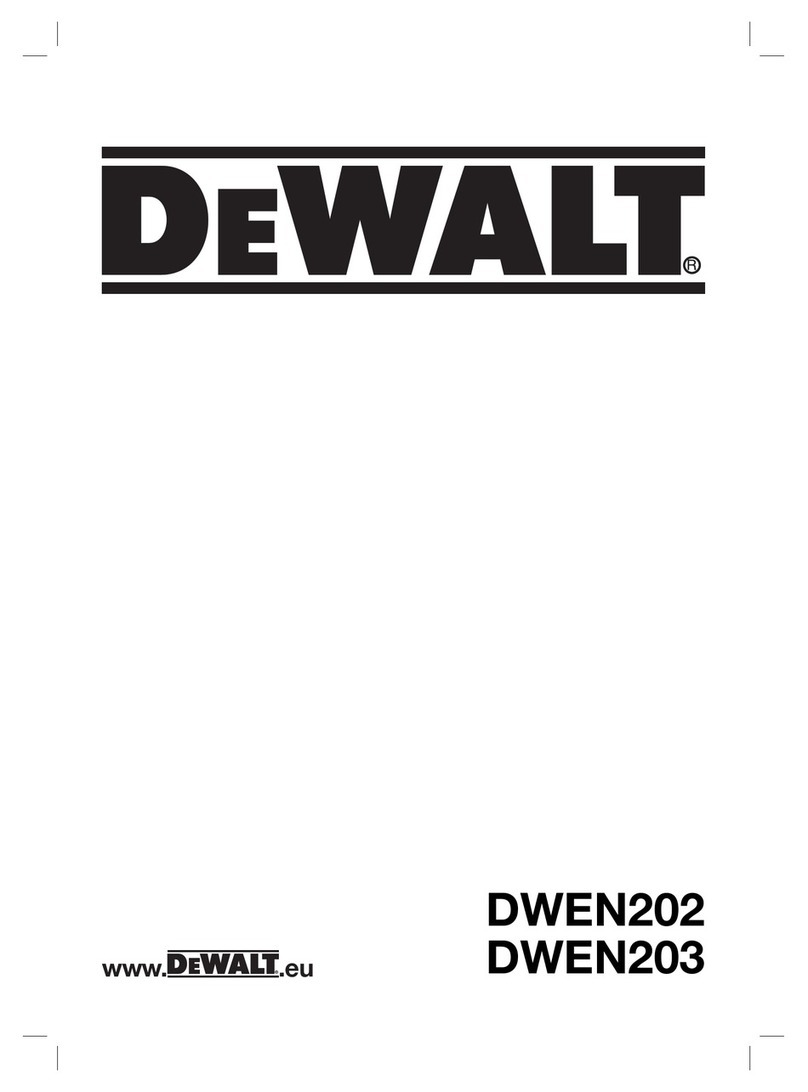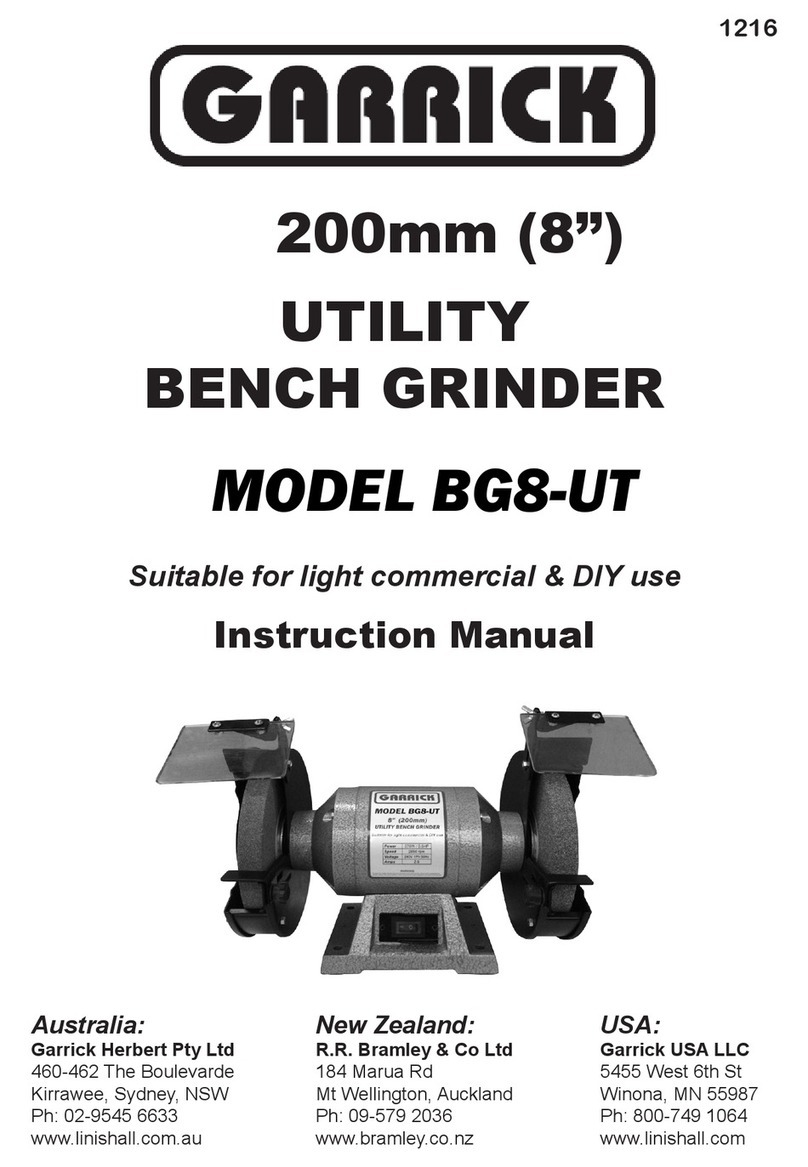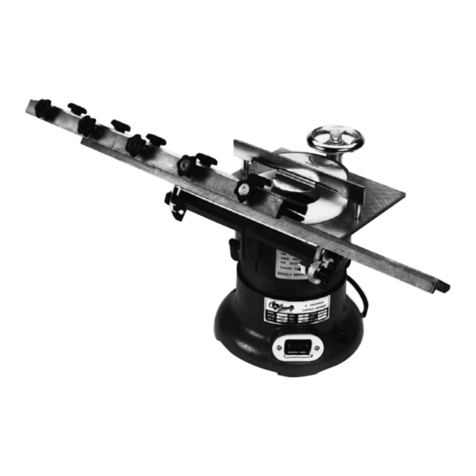
10 ENGLISH
12. Never lay the power tool down until the acces-
sory has come to a complete stop. The spinning
13. Do not run the power tool while carrying it at
your side. Accidental contact with the spinning
14. Regularly clean the power tool’s air vents. The
motor’s fan will draw the dust inside the housing
and excessive accumulation of powdered metal
15.
materials. Sparks could ignite these materials.
16. Do not use accessories that require liquid
coolants.
Kickback and related warnings:
Kickback is a sudden reaction to a pinched or snagged
-
-
trolled power tool to be forced in the direction opposite
entering into the pinch point can dig into the surface of
the material causing the wheel to climb out or kick out.
operator, depending on direction of the wheel’s move-
break under these conditions.
Kickback is the result of power tool misuse and/or
incorrect operating procedures or conditions and can be
1.
power tool and position your body and arms
to allow you to resist kickback forces. Always
use auxiliary handle, if provided, for maximum
control over kickback or torque reaction during
start-up.
or kickback forces, if proper precautions are taken.
2. Never place your hand near the rotating acces-
sory.
3. Do not position your body in the area where
power tool will move if kickback occurs.
Kickback will propel the tool in direction opposite
to the wheel’s movement at the point of snagging.
4. Use special care when working corners, sharp
edges, etc. Avoid bouncing and snagging the
accessory. Corners, sharp edges or bouncing
and cause loss of control or kickback.
5. Do not attach a saw chain woodcarving blade,
segmented diamond wheel with a peripheral
gap greater than 10 mm or toothed saw blade.
control.
operations:
1.
designed for the selected wheel. Wheels for
which the power tool was not designed cannot be
2. The grinding surface of centre depressed
wheels must be mounted below the plane of
the guard lip.
3. The guard must be securely attached to the
power tool and positioned for maximum safety,
so the least amount of wheel is exposed
towards the operator. The guard helps to protect
the operator from broken wheel fragments, acci-
dental contact with wheel and sparks that could
ignite clothing.
4. -
cations. For example: do not grind with the
are intended for peripheral grinding, side forces
shatter.
5.
of correct size and shape for your selected
wheel.
6. Do not use worn down wheels from larger
power tools. A wheel intended for larger power
tool is not suitable for the higher speed of a
7. When using dual purpose wheels always use
the correct guard for the application being
performed.
not provide the desired level of guarding, which
operations:
1. -
sive pressure. Do not attempt to make an
excessive depth of cut. Overstressing the wheel
or binding of the wheel in the cut and the possibil-
2. Do not position your body in line with and
behind the rotating wheel. When the wheel, at
-
3. When the wheel is binding or when interrupt-
tool and hold it motionless until the wheel
comes to a complete stop. Never attempt to
the wheel is in motion otherwise kickback may
occur. Investigate and take corrective action to
eliminate the cause of wheel binding.
4. Do not restart the cutting operation in the
workpiece. Let the wheel reach full speed and
carefully re-enter the cut.
walk up or kickback if the power tool is restarted in
the workpiece.
5. Support panels or any oversized workpiece to
minimize the risk of wheel pinching and kick-
back. Large workpieces tend to sag under their
own weight. Supports must be placed under the
workpiece near the line of cut and near the edge
of the workpiece on both sides of the wheel.
